By now you’re probably wondering will this blog ever stop dining out on the Portland garden bloggers meetup. Just one more for now on the plants that really had my number. Which is undeniably an odd number, but the heart wants what it wants. Many times I become infatuated with plants through magazines, online catalogues, or blogs, in a process I imagine is not dissimilar to online dating. Both have in common beautiful photos, seductive descriptions, but not necessarily the whole story. When plant and gardener finally meet and a trial period of compatibility is undertaken, disappointment can ensue on both sides, but there’s always the tantalizing possibility of a lasting attachment.
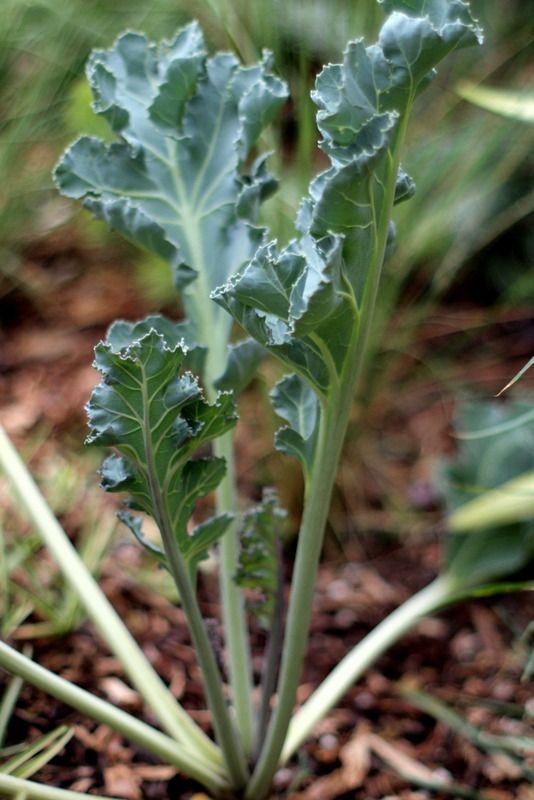
Earlier this year I finally made the acquaintance of long-time crush Crambe maritima, a European coastal plant with uncommonly beautiful leaves, thick and blue as an agave, curled and frilled at the margins. I think it was planted in my garden last fall. (Checking email records, I did purchase it last September via mail order from Oregon nursery Dancing Oaks.) Although impatient for the sea kale to thicken up, it’s exactly as I imagined it. We’re a good match, the sea kale and I, and all signs point to the beginning of a beautiful friendship.
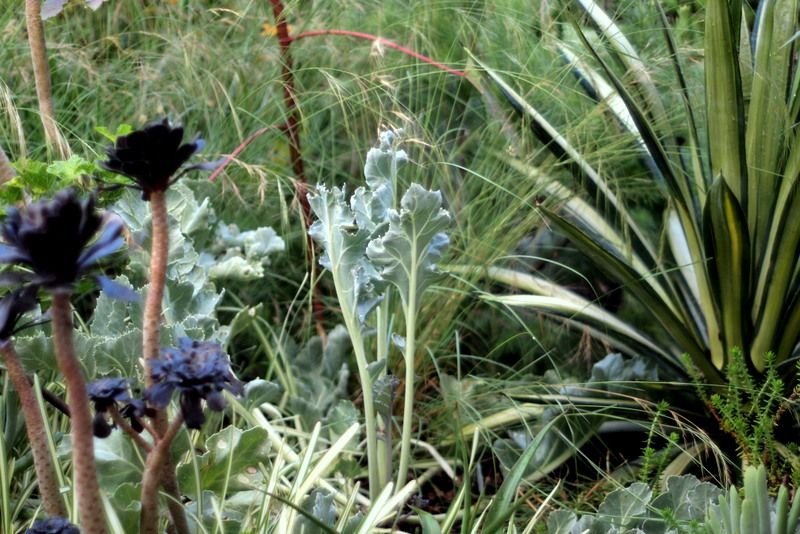
I thought I knew everything I needed to know about the sea kale, but I discovered in Portland an unexpected twist to this plant.

Crambe maritima, aka the sea kale, in the Floramagoria garden in Portland, Oregon this July. I had no idea its seedheads, like tiny white button mushrooms, would be as much of an attraction as its wavy, blue-green, cabbagey leaves. In Willy Wonka’s garden, this would be labeled the wasabi pea plant. (By the way, the plant is edible.) This unexpectedly nubby, bubbly texture endears the sea kale to me even more.

Crambe maritima’s pearly seedheads with pitcher plants and what looks like a gold-leaf Aechmea recurvata in bloom.
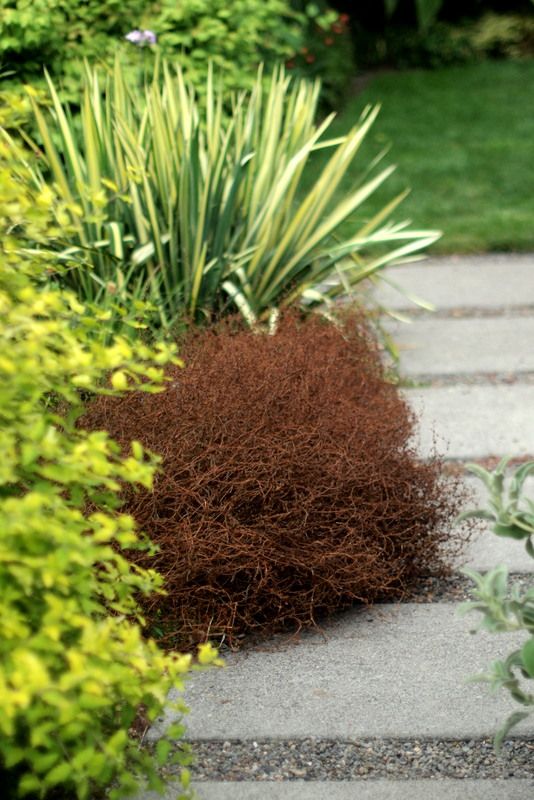
Then there’s the equivalent of meeting an intriguing plant for the first time and not getting its phone number, so to speak. This rusty tumbleweed’s name was given as Rumex ‘Maori,’ but I’ve had no luck finding any reference or additional information.
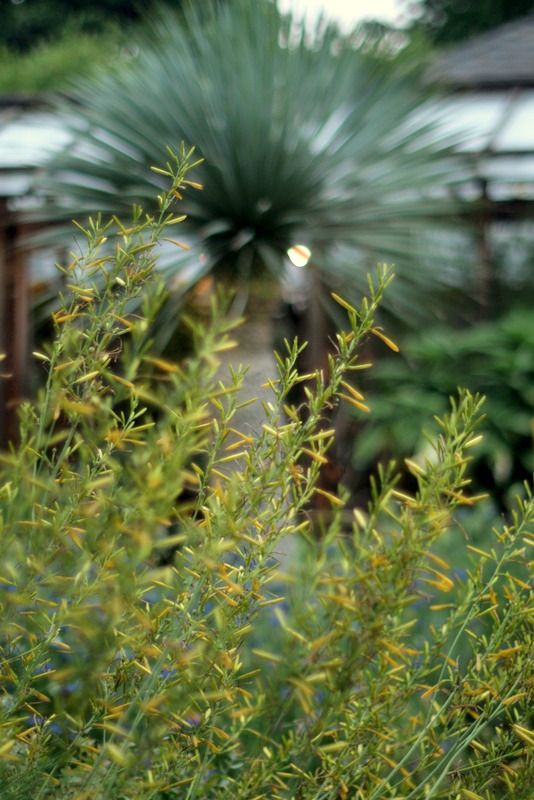
Here’s a plant I’ve been stalking for some time, Asphodeline lutea. Two new ones planted this spring have withered away.

At least I’m fairly sure this is an asphodel, again, a plant with which I have little real-world experience.
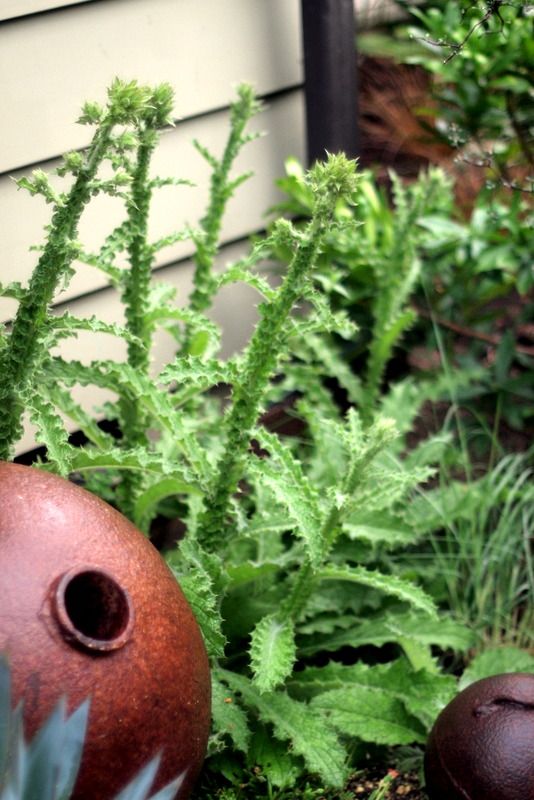
On the tour I bumped into a plant that I purchased the first day of the tour at the nursery Cistus, Berkheya purpurea. A nice coincidence.
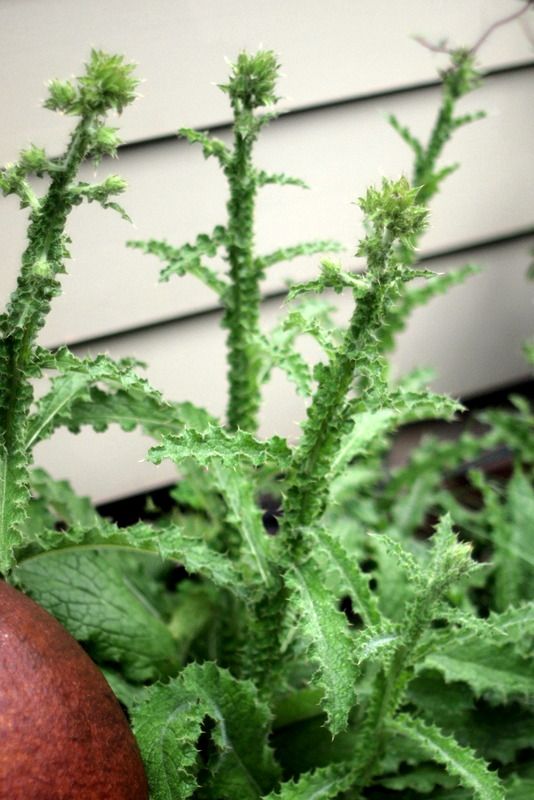
Fantastic stems, leaves and, when it blooms, large lavender daisies.
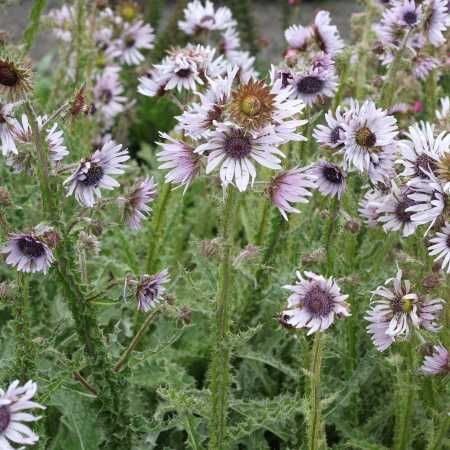
(photo of berkheya in bloom found here)
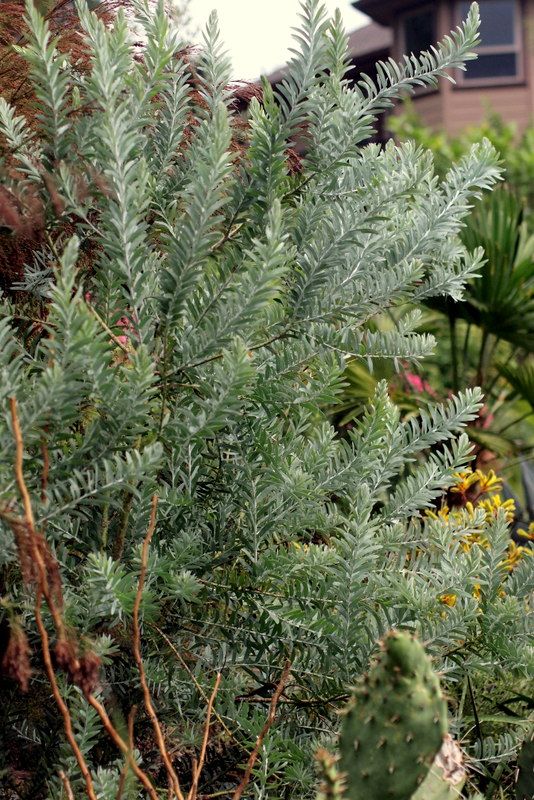
An acacia new to me in John Kuzma’s garden, Acacia covenyi.
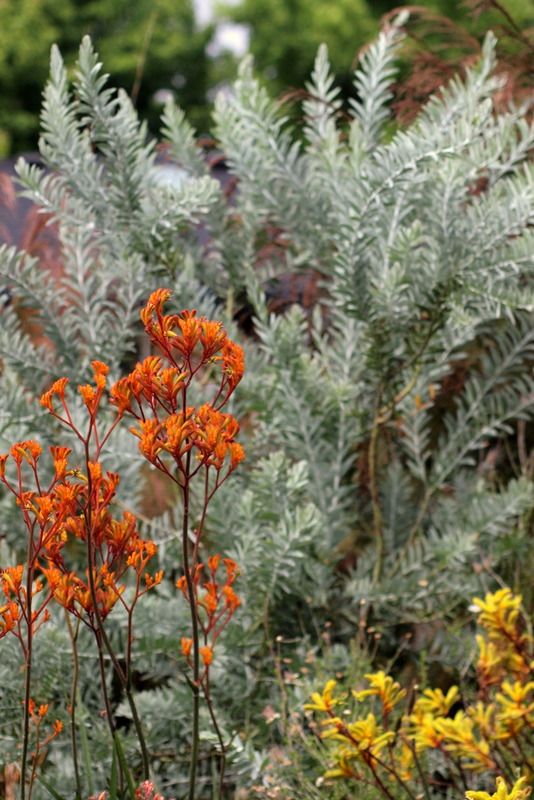
The same acacia seen here with a large clump of anigozanthos that overwinters in situ in the garden with protection
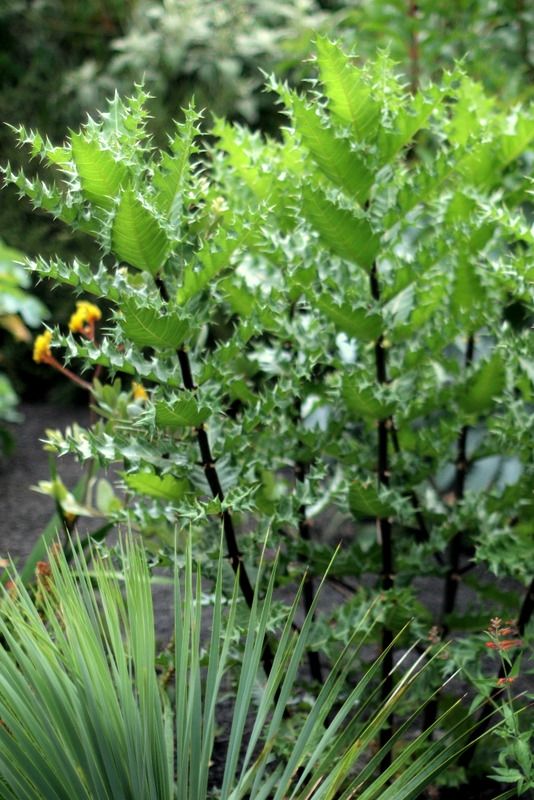
Possibly my favorite plant on the tour, Acanthus sennii. I’ve noticed I’m falling more for plants that have a chance of succeeding where I garden. I’m no longer throwing myself at every good-looking, high-maintenance type that comes along. A sign of maturity maybe?

Also in the Kuzma garden was this stunning velvety silver potentilla. Possibly Potentilla calabra or hippiana…or something else entirely. (P. gelida. thanks, Heather.)
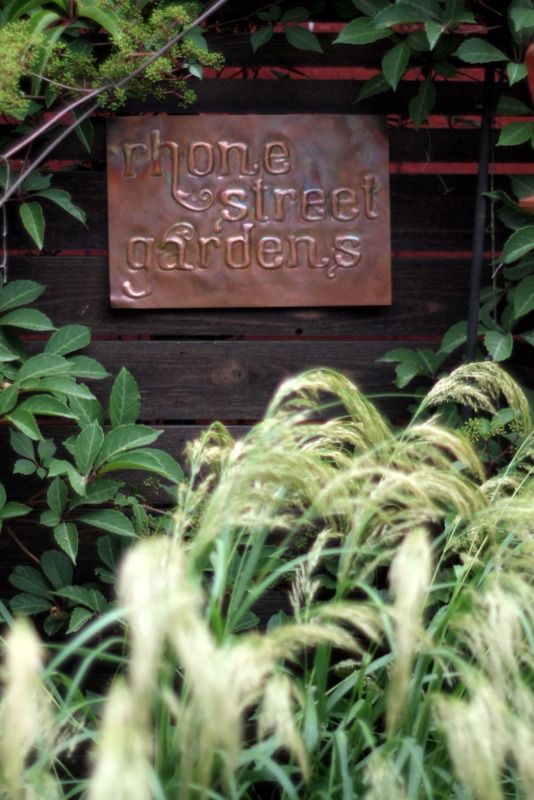
A beautiful grass, new to me, Achnatherum calamagrostis ‘Silver Spike,’ at the Grass Master’s incredible garden.
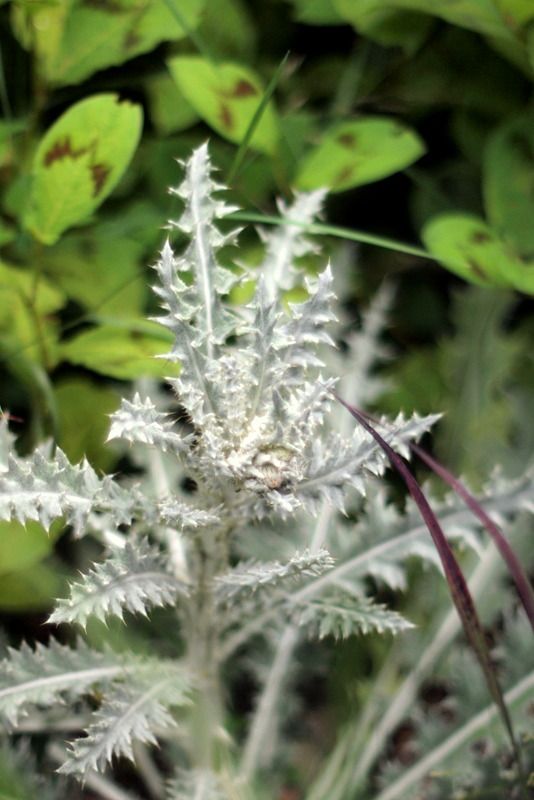
Scott was also growing the native thistle Cirsium occidentale. I’ve already killed one but found two more locally.
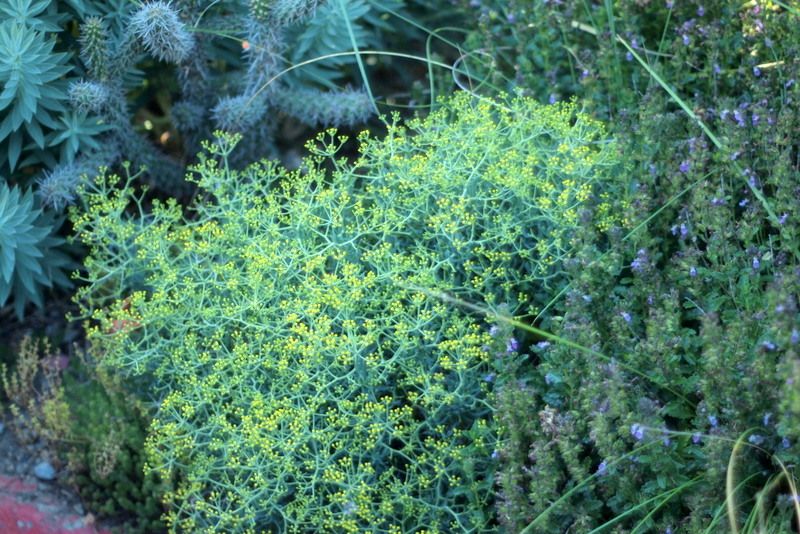
A wiry, tough cushion that caught my notice at the McMenamins Kennedy School, Bupleurum spinosum. Very cool. The admirable evergreeen shrub, Bupleurum falcatum, was also seen on the tour, which blooms in chartreuse umbels in summer.
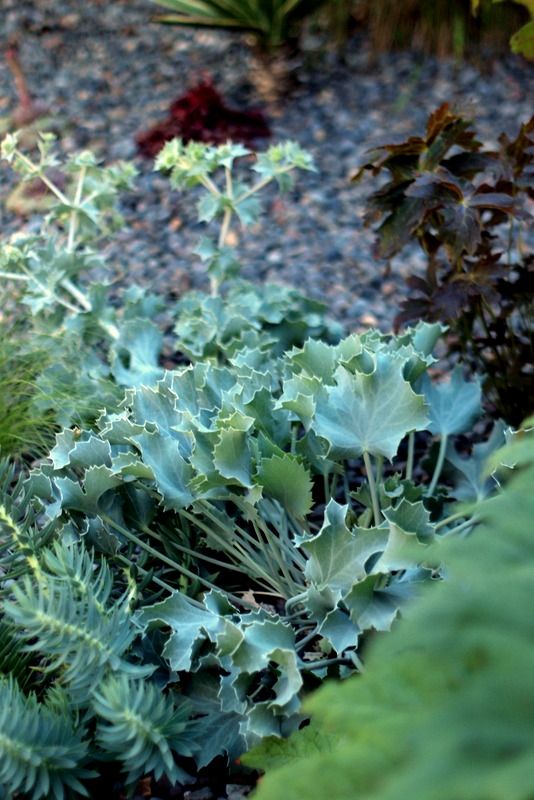
Eryngium maritimum in Loree’s Danger Garden. I started seeds of this in spring. Zip germination so far.
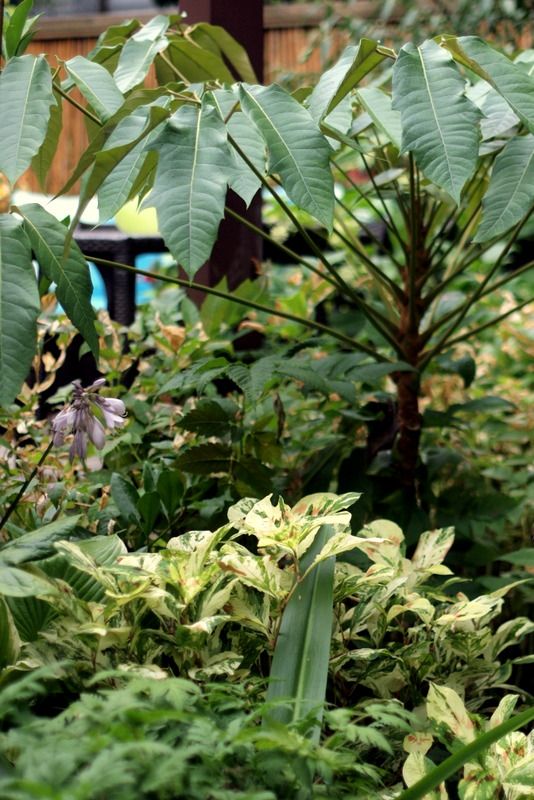
I’ll close with the “It” plant of the moment, one of the hardy scheffleras. This visit to Portland was my first introduction to them, and they were everywhere. S. delavayi maybe. Beautiful, but not this zone 10 garden’s type…

Thoroughly enjoyable and clever post as usual Denise! I like the way you paralleled affinity with certain plants to human relations and the dance it ensues. And I can’t blame you for continuing to feature the multi faceted delights of the Portland fling. There was a serious amount of stunning plants seen there!
I must have taken 10 photos of that Crambe. I just loved it. I assume it won’t grow here. You spotted some fetching plants, of which there were many.
Oh oh oh….. my heart is breaking because you are seducing me with pictures of all these fabulous plants I cannot grow here. LOVE that Sea Kale, and the flowers are wonderful. So much texture in one plant. Lucky you.
I must be as shy with plants as I am with new people, as I end up regretting later that I didn’t get as many names as I wanted to…
Great post, wonderful plants (most of which I can’t grow).
So many gorgeous lovelies to fall for! I’ve loved Crambe maritima since I saw it in a book about Derek Jarman’s Garden. You found some really delicious plants to love in Portland!
Yes oh yes, Crambe maratima, I am your slave.So Denise, the Asphodeline..I took about 20 photos of this and asked around for ID with no dice…do you feel confident ? I really need one. Need.
You have an eye for a certain turn of leaf, Denise. I found myself checking a few of these out on Google. I love the sea kale but fear its water needs. The Berkheya you found at Cistus, however, is a definite possibility…
@M&G, it really was a plant lover’s dream.
@Hoov, so far the crambe is doing well in my garden, so don’t count it out yet.
@Deanne, but there were also so many beauties that you and Sue and Monique grow, like the angelica and the actaeas, etc, that break my heart, so we’re even!
@Peter, I think that’s where I first learned of it too, growing in “shingle.”
@Kathy, I’m like 99 percent sure that’s Asphodeline lutea. And Annie is carrying it right now!
@Kris, the crambe is fairly tough and known to be drought tolerant in its coastal habitat. I’m crazy for planting in August — I hope the berkheya doesn’t mind.
Alan, I’m shy too but find plants are a great ice-breaker 😉
That potentilla is P. gelida. It’s such a good one. It’s not lying about how tall it is or the fact that it still lives with its mom. It really does want to snuggle and hear about your day.
Heather, ha! and thanks for the ID.
Thank you for the reminder of the name Bupleurum falcatum, that little thing was fabulous and then I forgot all about it (I blame a long and hot day). I’m not 100% on board with the Asphodeline lutea I.d., unless when I was growing it my plants were just “different” – do you remember which garden you saw it in? Was it Floramagoria (guessing based on the background), if so I’ll ask them.
Oh and about the Rumex, check this out:
http://plantlust.com/plants/rumex-flexuosus
Doesn’t look quite right does it, but then compare to this and be sure to look at the other photo:
http://www.ebay.com/itm/RUMEX-FLEXUOSUS-MAORI-DOCK-BRONZE-FOLIAGED-PERENNIAL-20-SEEDS-/330626779087
Maybe?
Loree, thanks for those links. Perhaps the rumex undergoes a tumbleweed transformation when it goes to seed? The rust color was intense. Yes, the asphodel-like plant was in Floramagoria. And sorry I muddied the waters — that cushion bupleurum was B. spinosum. B. falcatum is a much bigger shrub, very cool too but not flashy like this little one.
You ma’m called it right, that there is Asphodeline lutea, as confirmed by the gardener himself.
Loree, thanks so much for confirming. Wow, what a beauty it is, living up to its reputation.
To see Crambe maritima (which is hardy here in Denver,but hates me) in its ultimate glory, check out the Flickr set on Derek Jarman’s garden. http://www.flickr.com/photos/angusf/sets/656542/
Bob, I guess we can count you as another Derek Jarman fan. Thanks so much for that link. The seedheads are shown prominently there too. I can’t believe I missed them up til now.
Apparently the garden was periodically washed away by the sea, and was rebuilt. A metaphor, as Jarman was dying at the time. The jetsam, and the way it was arranged, is pretty cool.
Crambe maritima, being a plant of “shingle”, as they say in the U.K., would probably be happy growing in the American equivalent, pea gravel, and nothing else. As a general rule, plants native to highly permeable soils, like shingle, have a difficult time growing in heavier soils, like clay, because there is less water available to the roots.
I’m glad I wasn’t the only one who was delighted by the Crambe…I also had no idea that’s what the seed heads looked like…and you KNOW how much I love seed heads!
@Bob, I did see this crambe in a few other gardens on the tour, none as flourishing as this one, just a few leaves, no seedheads. You can just make out the dressing of gravel in the photo above. There was a potted Aloe plicatillis to the left, and behind a large clump of Stipa gigantea, so this corner was obviously kept very free draining. The pitcher plants were of course in their own self-contained bog. Here’s a photo with more of the layout:

@Scott, oh, I’m a fan from way back!
I’ve grown crambe maritime for 6+ years here in Cleveland! It self-seeds a bit each year, and it loves my sunny, well-drained, drought tolerant front yard.
One more reason to grow it: The little white flowers that precede those cool seed heads have a lightly sweet fragrance. Not too cloying…just sweet and summery. 🙂
I haven’t been able to follow blogs this month but now that I’m seeing your posts I’m enjoing them a lot. I like the plants you mention here. There was so much information in the fling gardens that was new to me that I couldn’t remember plant names. I appreciate I can see them in your blog now!
I haven’t been able to comment in your previous post “Got flowers?”. The pictures are beautiful!!